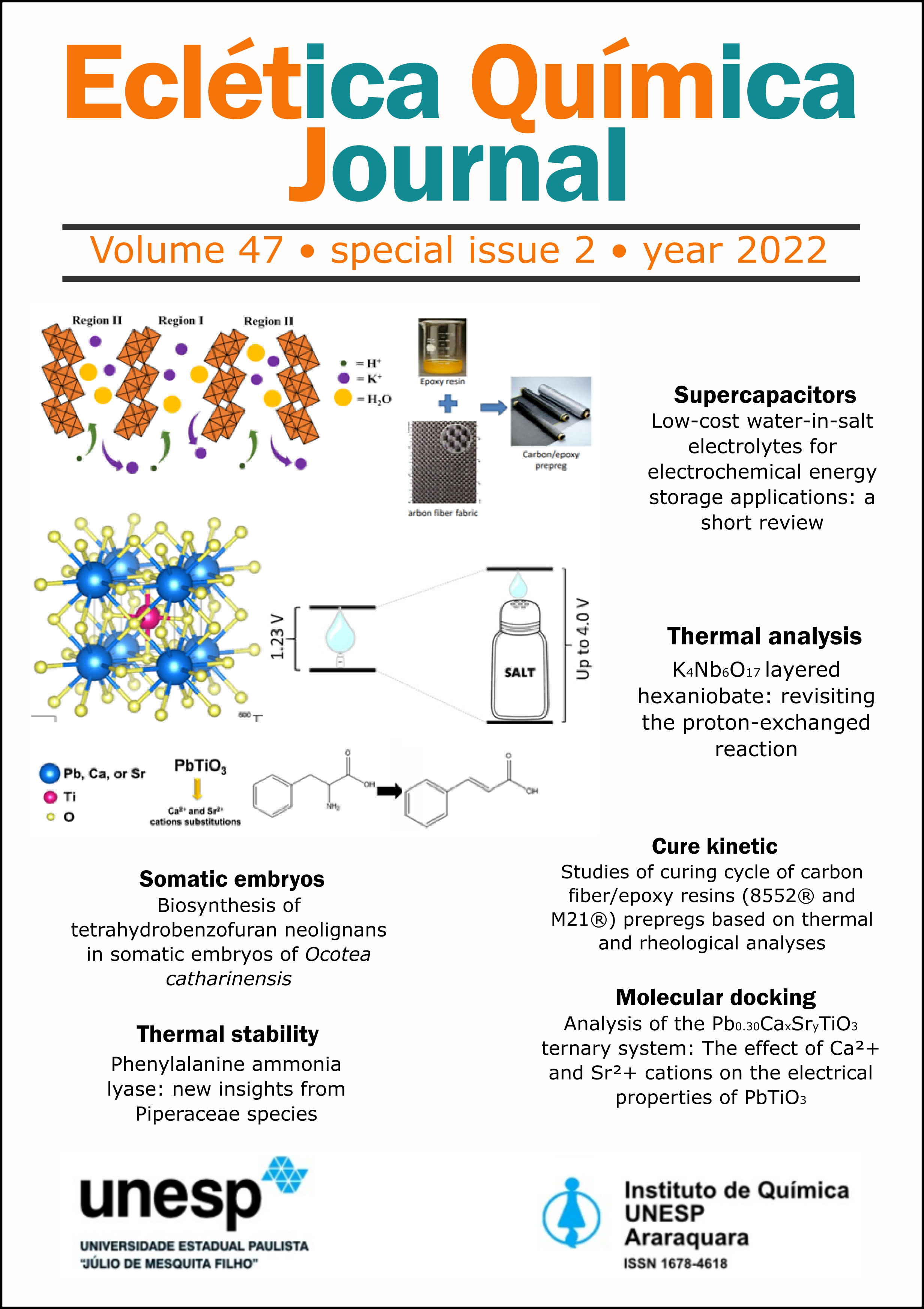Abstract
Somatic embryos of Ocotea catharinensis were used as a model to investigate the biosynthetic pathway of tetrahydrobenzofuran neolignan formation by means of feeding 13C-labelled precursors followed by analysis using MS and 13C NMR. Isotopomers of L-[13C]-phenylalanine administered to embryos were incorporated into tetrahydrobenzofuran neolignans and the analysis of 13C NMR clearly revealed the enriched position of precursors. While feeding a series of putative intermediate including [8–13C]-ferulic acid, [8–13C]-glycoferulic acid, and [8–13C]-coniferyl alcohol were not successful in incorporation to the neolignans, the [8–13C]-coniferyl acetate was detected as an intermediate in the biosynthesis of the neolignan 5’-methoxy-porosin. In the bioconversion assay using the protein fraction from the embryogenic cultures, only the substrate coniferyl acetate was converted into isoeugenol, which together with eugenol, is one of the putative precursors of neolignan formation. These findings support that the tetrahydrobenzofuran neolignans are derived from the oxidative coupling between units of E- isoeugenol and 5’-methoxy-eugenol leading to a regio- and stereospecific products.
References
Bastos, E. L.; Ciscato, L. F. M. L.; Baader, W. J., Microwave-assisted protection of phenols as tert-butyldimethylsilyl (TBDMS) ethers under solvent-free conditions. Synth. Commun. 2005, 35 (11), 1501–1509. https://doi.org/10.1081/SCC-200057992
Boschi, D.; Tron, G. C.; Lazzarato, L.; Chegaev, K.; Cena, C.; Di Stilo, A.; Giorgis, M.; Bertinaria, M.; Fruttero, R.; Gasco, A. NO-donor phenols: a new class of products endowed with antioxidant and vasodilator properties. J. Med. Chem. 2006, 49 (10), 2886–2897. https://doi.org/10.1021/jm0510530
Katayama, T.; Davin, L. B.; Lewis, N. G. An extraordinary accumulation of (–)-pinoresinol in cell-free extracts of Forsythia intermedia: evidence for enantiospecific reduction of (+)-pinoresinol. Phytochemistry. 1992, 31 (11), 3875–3881. https://doi.org/10.1016/S0031-9422(00)97545-9
Koeduka, T.; Fridman, E.; Gang, D. R.; Vassao, D. G.; Jackson, B. L.; Kish, C. M.; Orlova, I.; Spassova, S. M.; Lewis, N. G.; Noel, J. P.; Baiga, T. J.; Dudareva, N.; Pichersky, E. Eugenol and isoeugenol, characteristic aromatic constituents of spices, are biosynthesized via reduction of a coniferyl alcohol ester. Proc. Natl. Acad. Sci. 2006, 103 (26), 10128–10133. https://doi.org/10.1073/pnas.0603732103
Mohri, K.; Watanabe, Y.; Yoshida, Y.; Satoh, M.; Isobe, K.; Sugimoto, N.; Tsuda, Y., Synthesis of glycosylcurcuminoids. Chem. Pharm. Bull. 2003, 51 (11), 1268–1272. https://doi.org/10.1248/cpb.51.1268
Schiaffo, C. E.; Dussault, P. H. Ozonolysis in Solvent/Water Mixtures: Direct Conversion of Alkenes to Aldehydes and Ketones. J. Organic Chemistry 2008, 73 (12), 4688–4690. https://doi.org/10.1021/jo800323x
Stöckigt, J.; Klischies, M. Biosynthesis of lignans: Part I. Biosynthesis of arctiin (3) and phillyrin (5). Holzforschung 1977, 31 (2), 41–44. https://doi.org/10.1515/hfsg.1977.31.2.41

This work is licensed under a Creative Commons Attribution 4.0 International License.





